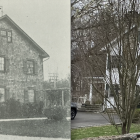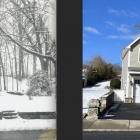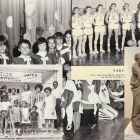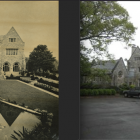Greenley Tea Room
New Canaan Now & Then: The Greenley Tea Garden
|
‘New Canaan Now & Then’ is sponsored by Brown Harris Stevens Realtors Joanne Santulli, Karen Ceraso, Bettina Hegel and Schuyler Morris. The Greenley Tea Garden was opened by Orline A. Leonard St. John Alexander at her home located at 130 Greenley Road.
”The property, originally consisting of 83 acres, was sold on May 9, 1883 passing from William St. John (residuary devisee under will of Lucy Weed) to George H. Wildman. A New Canaan Advertiser article dated December 10, 2008 reports that William St.





